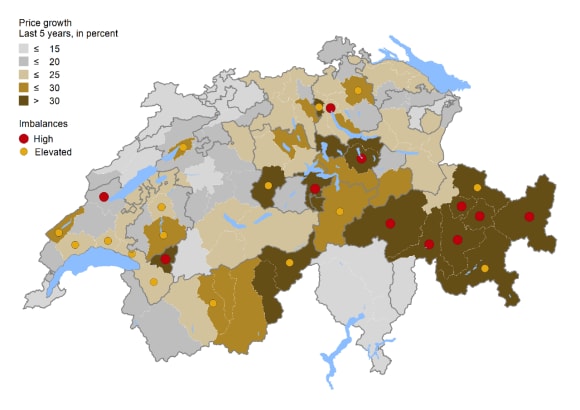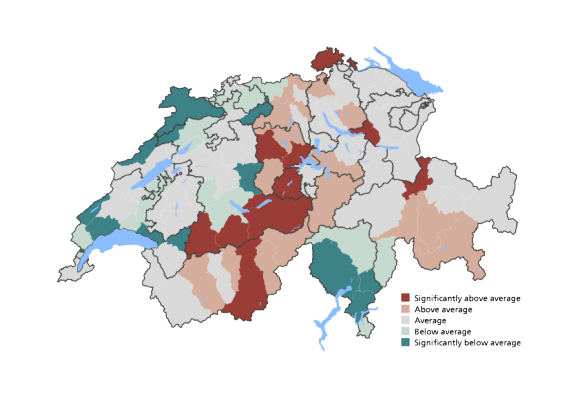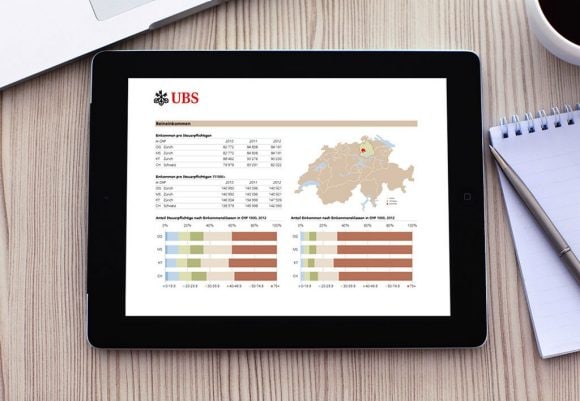We’re here for you
Arrange an appointment for a non-binding consultation or if you have any questions, just give us a call.

![]()
header.search.error
UBS Real Estate Market Study
Development of real estate prices in Switzerland: What are the forecasts for the real estate market? Which factors are decisive?
Content:

Owner-occupied housing became significantly more expensive in the third quarter, with a nominal increase of 0.8 percent. Year over year, home prices rose 3.5 percent — the highest in more than three years — while consumer prices stagnated.
Real asking rents are currently 1.1 percent above their level a year ago. Existing rents rose by 1.4 percent year-on-year. The reference interest rate, which fell again in September 2025, is likely to further dampen the increase in existing rents in the coming quarters.
UBS Swiss Real Estate Bubble Index in the 3rd quarter of 2025: moderate
The UBS Swiss Real Estate Bubble Index rose to 0.29 index points in the third quarter of 2025, up from 0.20. The risk of a real estate bubble is still considered moderate. A price correction in the coming quarters appears unlikely.
What is the UBS Real Estate Bubble Index and how is it calculated?
The UBS Swiss Real Estate Bubble Index shows the risk of a real estate bubble – a significant overvaluation of real estate and the likelihood of an imminent price drop – on the Swiss real estate market. UBS economists use a model with different subindices to calculate the bubble index:
Depending on the current index value, the real estate bubble risk is divided into the following four categories:

The risk map shows in which municipalities the real estate market is at risk of overheating
The map shows price developments over the last five years for all 106 Swiss economic regions, as well as an indication of regional risk based on the development of the price-to-income and price-to-rent ratios.

Despite attractive financing conditions, a slowdown in home price increases is expected in the coming quarters. Economic growth in Switzerland is at risk of losing further momentum. Rising uncertainty regarding jobs and incomes is likely to negatively impact demand for homeownership. By the end of 2025, prices are expected to be about 3.5 percent above the level at the start of the year. For the years 2026 and 2027, we anticipate a slight slowdown in price increases to 2 to 3 percent due to the strained affordability of homeownership. However, not all regions are likely to benefit equally from value gains.
Regional price outlook
The best conditions for above-average price increases - measured by local demand surplus, momentum, and relative price level in the residential property market - are found in Upper Valais, the Bernese Oberland, Chur, Lucerne, and Schaffhausen. Our analyses indicate below-average price development around Lake Geneva, along the Jura Arc, and in Northwestern Switzerland.


The facts about your preferred municipality
Do you want to understand how property prices or population levels have changed in a municipality? Or how the location is perceived in general? How high are taxes? The UBS municipality guide is free of charge and answers all your questions.
Arrange an appointment for a non-binding consultation or if you have any questions, just give us a call.
Disclaimer